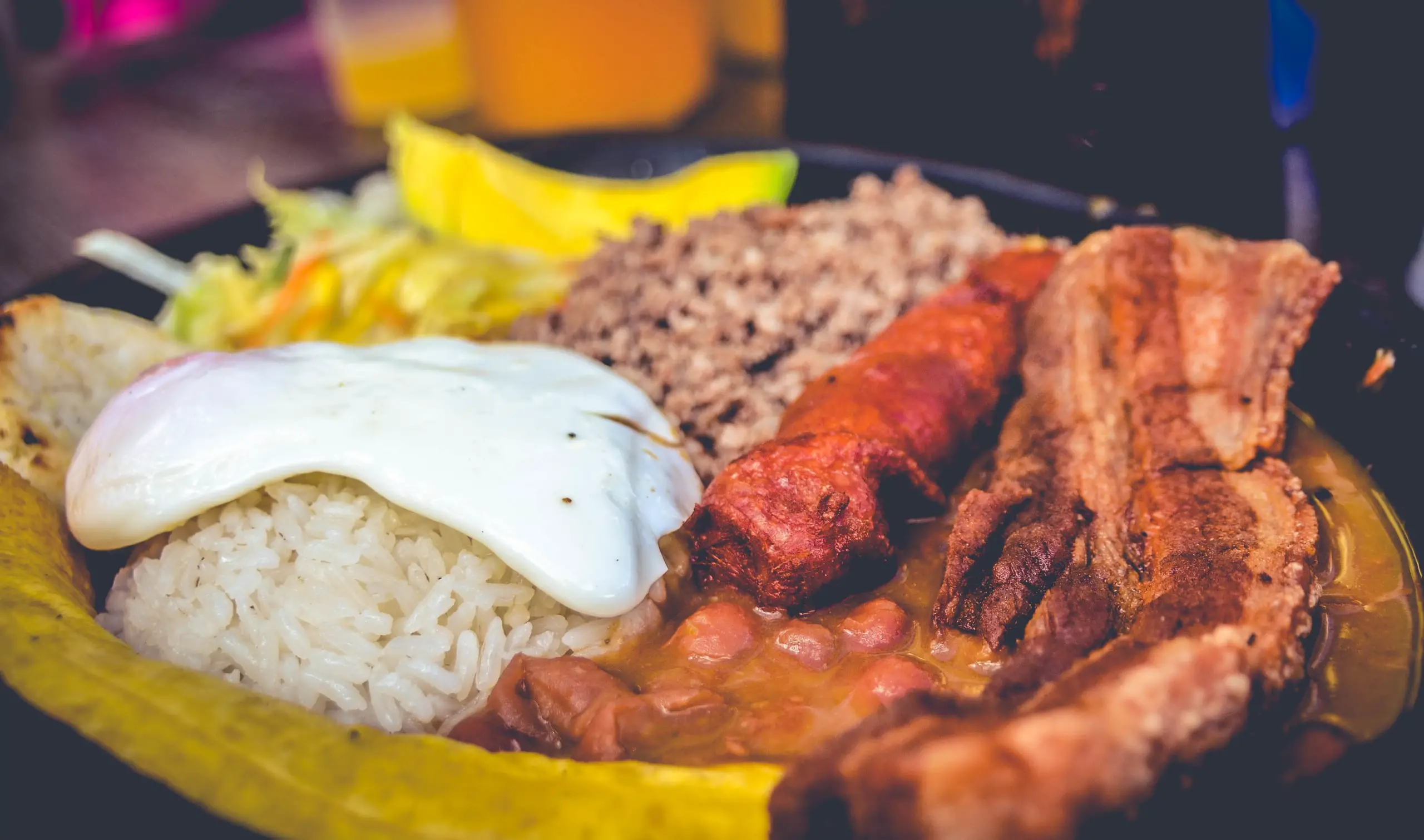Table of Contents
A Heaping Portion of Meat, Sausages, Beans, Rice and Fried Bananas!
Bandeja Paisa translates as “Paisa Platter” and it’s a meal best ordered when hungry – very hungry. It’s a heaping plate of beans, rice, fried egg, sausages, meat and fried plantains. It’s traditionally eaten at lunch time.
History of the Bandeja Paisa
The Colombian Bandeja Paisa is traditionally from the northern part of the nation, where the people are traditionally called “Paisa.” It’s also known as “Bandeja Antioqueña” and “Bandeja de arriero.” It evolved from the different cuisines of the hard-working people of the area, who themselves are descended from Europeans, Africans and Native Americans. The workingman nature of the dish is evident in one of the names: “Bandeja de Arriero” means “Mule-driver’s Platter.”
Elements of a Bandeja Paisa
A Bandeja Paisa is no one’s idea of fancy, modern cuisine: it’s an honest, tasty gut-buster designed to feed a working man for a long day. There are slight variations from one region to another, but a typical Bandeja contains the following:
- “Powdered beef:” Marinated flank steak which is then boiled with onions and garlic before being run through a food processor until extremely finely chopped.
- Pinto beans cooked with pork or ham in a mildly spicy tomato sauce
- Chicharron: Fried pork rind
- Fried egg
- White rice
- Sausage: one or two, preferably chorizo, but other sausages can be substituted
- Fried plantains
- “Hogao” sauce: typically served on the side, hogao sauce is made from onions, tomatoes and spices.
- Slices of avocado (on the side)
- Slices of lime (on the side)
How to make a Bandeja Paisa
For a real Bandeja Paisa, it’s necessary to go to Colombia and have the pros whip one up. But for those who want the experience but can’t afford a plane ticket, it’s possible to approximate one at home.
- White rice, lime, avocado and fried eggs are easy: there’s nothing special about their Colombian versions.
- For the powdered beef, fry up some ground beef with some garlic (fresh or powdered), onion, cumin, salt and pepper. Or, simply fry it and add some taco seasoning, which will taste about the same.
- For the red beans, simply choose a can of pork and red beans from the store.
- For the sausage, pick up chorizo at the local supermarket. If they don’t have it, spicy Italian sausages are probably the closest thing. Hot dogs will suffice in a pinch, although most Colombians would consider it heresy. They can be fried or grilled.
- Plantains: making fried plantains is an art that takes lots of practice. For beginners or those without access to plantains, a regular banana that is neither too green nor too ripe can be peeled, sliced lengthwise and gently fried in vegetable oil.
- Chicharrón: Proper Chicharrón is the correctly fried belly skin of a pig and it should not be attempted by those who don’t know what they’re doing. The closest thing to it with no-muss-and-no-fuss is a bag of pork rinds, available in the snacks section of any supermarket.
- Hogao sauce is not hard to make (there is a good recipe here) but if making it is not feasible, regular bottled salsa can be substituted.
Obviously, a plate with hot dogs, canned beans and salsa is not the same as a true Bandeja Paisa, but it could give an idea of what one is like. Try one out at a Latin festival or visit Colombia and get the real thing!

It’s not a matter of where, but when. Time is precious and my time spent living and experience the cultures of this world is what I lust for. This is why I created this website, to share true, genuine experiences and not just typical touristy info. Travel, the love of coffee, and food!
